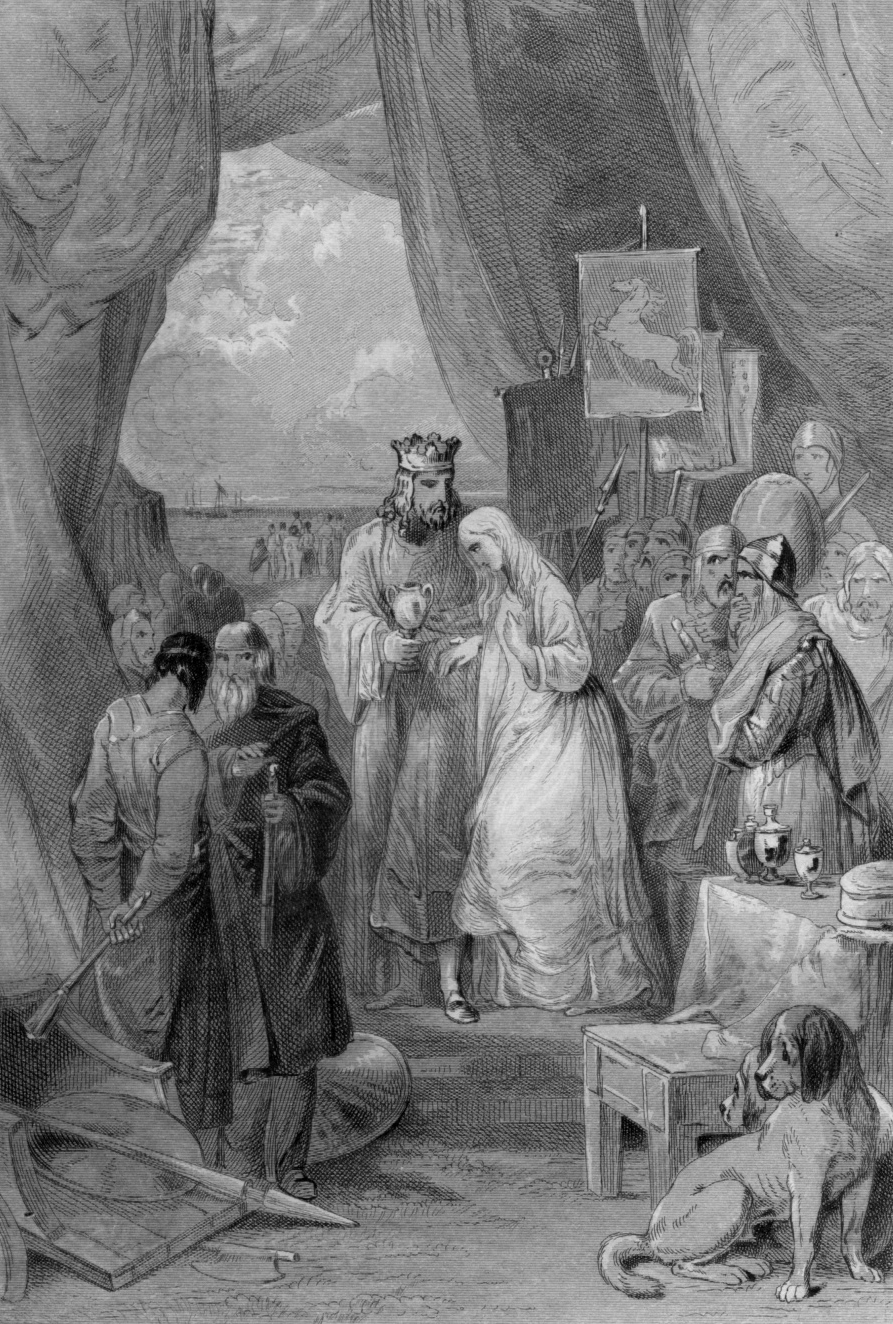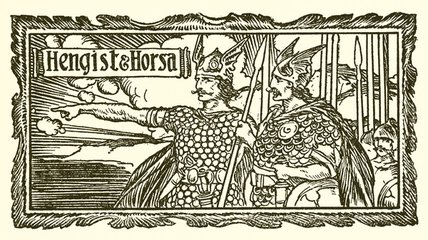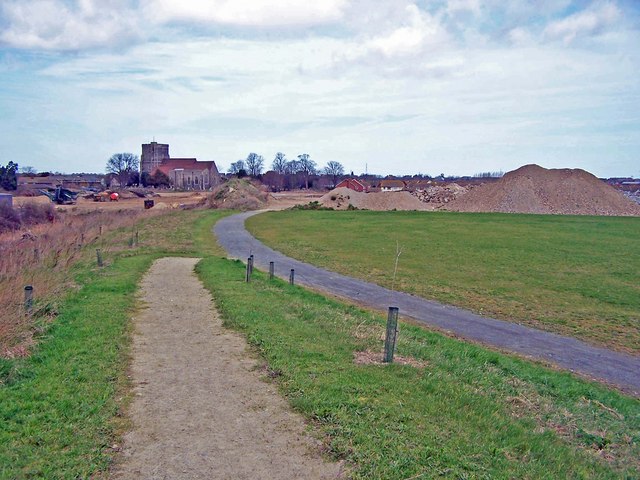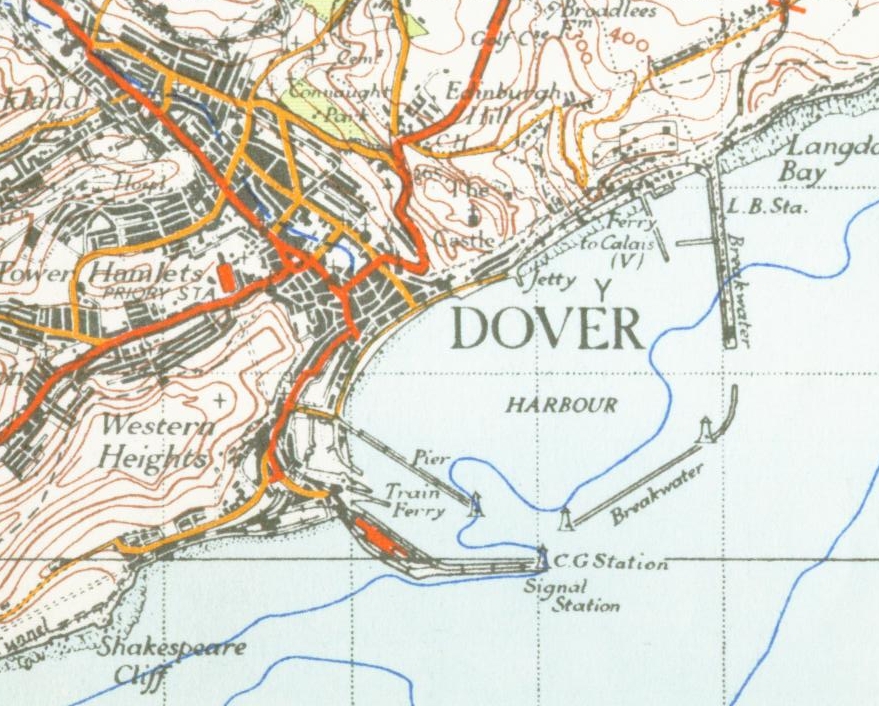|
Milton Regis
Milton Regis is a village in the district of Swale in Kent, England. Former names include Milton-next-Sittingbourne, Milton Royal, Middleton, Midletun and Middletune. It has a population of about 5,000. Today it is a suburb of Sittingbourne, although this has not always been the case. Until around 1800, Sittingbourne was a small hamlet and under the control of the Manor of Milton Regis. The ancient settlement was near the church, and the current Milton Regis dates back only to 1052. There are still many timber-framed houses and buildings, including a Medieval Court Hall (a seat of Justice and Administration) that dates back to 1450. The town and Manor of Middleton Regis, as it was called then, was recorded as the largest and most powerful manor in the lathe of Scraye (in the centre of Kent). Milton Regis was formerly part of the Sittingbourne and Milton urban district. Geography The area occupied by Milton Regis is low-lying, often marshy, land along the banks of Milton Creek. ... [...More Info...] [...Related Items...] OR: [Wikipedia] [Google] [Baidu] |
Borough Of Swale
Swale is a Non-metropolitan district, local government district with Borough status in the United Kingdom, borough status in Kent, England. The council is based in Sittingbourne, the borough's largest town. The borough also contains the towns of Faversham, Queenborough and Sheerness, along with numerous villages and surrounding rural areas. It includes the Isle of Sheppey and is named after The Swale, the narrow channel which separates Sheppey from the mainland part of the borough. Some southern parts of the borough lie within the Kent Downs, a designated Area of Outstanding Natural Beauty. The borough borders the Medway unitary authority area to the west, the Borough of Maidstone to the south-west, the Borough of Ashford to the south-east, and the City of Canterbury to the east. Under proposed reorganisation in either April 2027 or 2028 the borough will face abolition and will join with one or more adjoining councils to form a new Unitary Authority. Details of such proposals ar ... [...More Info...] [...Related Items...] OR: [Wikipedia] [Google] [Baidu] |
Whitstable
Whitstable () is a town on the north coast of Kent, England, at the convergence of the The Swale, Swale and the Greater Thames Estuary, north of Canterbury and west of Herne Bay, Kent, Herne Bay. The town, formerly known as Whitstable-on-Sea, was famous for oysters, collected from beds beyond the low water mark from Roman times until the mid-20th century. The annual Whitstable Oyster Festival takes place during the summer. In 1830, the Canterbury and Whitstable Railway, one of the earliest passenger services, opened. In 1832, the company built a harbour and extended the line to handle coal and other bulk cargos for the City of Canterbury. The railway has closed, but the harbour still plays an important role in the town's economy. The railway route is now a cycle path which leads to Canterbury. History Archaeological finds indicate that the Whitstable area was inhabited during the Palaeolithic era, the Bronze Age and the Iron Age. Oysters were harvested in the area in ancien ... [...More Info...] [...Related Items...] OR: [Wikipedia] [Google] [Baidu] |
Eorcenberht Of Kent
Eorcenberht of Kent (also Ærconberht, Earconberht, or Earconbert) (died 14 July 664) was king of the Anglo-Saxon kingdom of Kent from 640 until his death, succeeding his father Eadbald. The Kentish Royal Legend (also known as the Mildrith legend) suggests that he was the younger son of Eadbald and Emma of Austrasia, and that his older brother Eormenred was deliberately passed over, although another possibility is that they ruled jointly. According to Bede (''HE'' III.8), Eorcenberht was the first king in Britain to command that pagan " idols" (cult images) be destroyed and that Lent be observed, marking a key point in the Christianisation of Anglo-Saxon England. It has been suggested that these orders may have been officially committed to writing, in the tradition of Kentish law-codes initiated by Æthelberht, but no such text survives. After the death of Honorius, Archbishop of Canterbury, Eorcenberht appointed the first Saxon archbishop, Deusdedit, in 655. Eorcenberht ... [...More Info...] [...Related Items...] OR: [Wikipedia] [Google] [Baidu] |
Seaxburh Of Ely
Seaxburh, also Saint Sexburga of Ely (died about 699), was an Anglo-Saxon queen and abbess, venerated a saint of the Christian Church. She was married to King Eorcenberht of Kent. After her husband's death in 664, Seaxburh remained in Kent to bring up her children. She acted as regent until her young son Ecgberht came of age. Seaxburh founded the abbeys at Milton Regis and Minster-in-Sheppey where her daughter Ermenilda was also a nun. She moved to the double monastery at Ely where her sister Æthelthryth was abbess and succeeded her when she died in 679. According to Bede, in 695, Seaxburh organised the movement (or translation) of Æthelthryth's remains to a marble sarcophagus, after they had lain for sixteen years in a common grave. On opening the grave, it was discovered that her body was miraculously preserved. The legend is described in Bede's ''Ecclesiastical History of the English People'', which celebrates the saintly virtues of Æthelthryth, but speaks less high ... [...More Info...] [...Related Items...] OR: [Wikipedia] [Google] [Baidu] |
King Vortigern
Vortigern (; , ; ; ; Old Breton: ''Gurdiern'', ''Gurthiern''; ; , , , etc.), also spelled Vortiger, Vortigan, Voertigern and Vortigen, was a 5th-century warlord in Britain, known perhaps as a king of the Britons or at least connoted as such in the writings of Bede and Gildas. His existence is contested by scholars and information about him is obscure. He may have been the "superbus tyrannus" said to have invited Hengist and Horsa to aid him in fighting the Picts and the Scots, whereupon they revolted, killing his son in the process and forming the Kingdom of Kent. It is said that he took refuge in North Wales, and that his grave was in Dyfed or the Llŷn Peninsula. Gildas later denigrated Vortigern for his misjudgement and also blamed him for the loss of Britain. He is cited at the beginning of the genealogy of the early Kings of Powys. Medieval accounts Gildas The 6th-century cleric and historian Gildas wrote ''De Excidio et Conquestu Britanniae'' () in the first decades o ... [...More Info...] [...Related Items...] OR: [Wikipedia] [Google] [Baidu] |
Horsa
Hengist (, ) and Horsa are legendary Germanic peoples, Germanic brothers who according to later English legends and ethnogenesis theories led the Angles (tribe), Angles, Saxons and Jutes, the progenitor groups of modern English people, in their Anglo-Saxon settlement of Britain, supposed invasion of Great Britain in the 5th century. Tradition lists Hengist as the first of the Jutish kings, or alternatively as the founder itself, of the Kingdom of Kent. Modern scholarly consensus regards Hengist and Horsa as mythical figures, given their alliteration, alliterative animal names, the seemingly constructed nature of their genealogy, and the unknowable quality of Bede's sources.Halsall (2013:60-62). Their later detailed representation in texts such as the Anglo-Saxon Chronicle says more about ninth-century attitudes to the past than about the time in which they are said to have existed.Yorke (1993).Harland (2021:32). According to early sources, Hengist and Horsa arrived in Britain ... [...More Info...] [...Related Items...] OR: [Wikipedia] [Google] [Baidu] |
Hengist
Hengist (, ) and Horsa are legendary Germanic brothers who according to later English legends and ethnogenesis theories led the Angles, Saxons and Jutes, the progenitor groups of modern English people, in their supposed invasion of Great Britain in the 5th century. Tradition lists Hengist as the first of the Jutish kings, or alternatively as the founder itself, of the Kingdom of Kent. Modern scholarly consensus regards Hengist and Horsa as mythical figures, given their alliterative animal names, the seemingly constructed nature of their genealogy, and the unknowable quality of Bede's sources.Halsall (2013:60-62). Their later detailed representation in texts such as the Anglo-Saxon Chronicle says more about ninth-century attitudes to the past than about the time in which they are said to have existed.Yorke (1993).Harland (2021:32). According to early sources, Hengist and Horsa arrived in Britain at Ebbsfleet on the Isle of Thanet. For a time, they served as mercenaries for ... [...More Info...] [...Related Items...] OR: [Wikipedia] [Google] [Baidu] |
Neolithic
The Neolithic or New Stone Age (from Ancient Greek, Greek 'new' and 'stone') is an archaeological period, the final division of the Stone Age in Mesopotamia, Asia, Europe and Africa (c. 10,000 BCE to c. 2,000 BCE). It saw the Neolithic Revolution, a wide-ranging set of developments that appear to have arisen independently in several parts of the world. This "Neolithic package" included the History of agriculture, introduction of farming, domestication of animals, and change from a hunter-gatherer lifestyle to one of sedentism, settlement. The term 'Neolithic' was coined by John Lubbock, 1st Baron Avebury, Sir John Lubbock in 1865 as a refinement of the three-age system. The Neolithic began about 12,000 years ago, when farming appeared in the Epipalaeolithic Near East and Mesopotamia, and later in other parts of the world. It lasted in the Near East until the transitional period of the Chalcolithic (Copper Age) from about 6,500 years ago (4500 BCE), marked by the development ... [...More Info...] [...Related Items...] OR: [Wikipedia] [Google] [Baidu] |
Kemsley
Kemsley, once a separate village, is now a suburb of Sittingbourne in Kent, England. According to Asserius Menevensis in his contemporary survey, the Danes built a fortress or castle here in 893 at a place called 'Kemsley downe'. This later became 'Castle Rough'. At the end of the 19th century, the site of the village was simply a row of cottages beside a brick works, located close to the remains of the medieval fortified manor house Castle Rough. In 1924, with expansion impossible at the old Sittingbourne Paper Mills, owner Edward Lloyd built the new Kemsley Paper Mill, which served by a creek allowed the direct importation of raw materials to the site. At the same time he built a garden village to house his employees, the core of which comprises the modern day Kemsley village. The narrow gauge industrial railway An industrial railway is a type of railway (usually private) that is not available for public transportation and is used exclusively to serve a particul ... [...More Info...] [...Related Items...] OR: [Wikipedia] [Google] [Baidu] |
Mesolithic
The Mesolithic (Ancient Greek language, Greek: μέσος, ''mesos'' 'middle' + λίθος, ''lithos'' 'stone') or Middle Stone Age is the Old World archaeological period between the Upper Paleolithic and the Neolithic. The term Epipaleolithic is often used synonymously, especially for outside northern Europe, and for the corresponding period in Epipaleolithic Near East, the Levant and Epipaleolithic Caucasus, Caucasus. The Mesolithic has different time spans in different parts of Eurasia. It refers to the final period of hunter-gatherer cultures in Europe and the Middle East, between the end of the Last Glacial Maximum and the Neolithic Revolution. In Europe it spans roughly 15,000 to 5,000 Before Present, BP; in the Middle East (the Epipalaeolithic Near East) roughly 20,000 to 10,000 Before Present, BP. The term is less used of areas farther east, and not at all beyond Eurasia and North Africa. The type of culture associated with the Mesolithic varies between areas, b ... [...More Info...] [...Related Items...] OR: [Wikipedia] [Google] [Baidu] |
Milton Creek Country Park
Milton Creek Country Park is situated in 128 acres between Milton Regis and Kemsley, on the west bank of Milton Creek in Sittingbourne, Kent, England. This site was once called Church Marshes Country Park. Geography Church Marshes is at the base of Kemsley Down (hills near Kemsley), on the banks of Milton Creek where it flows into the Swale. It is partly due to these two navigable waters which link directly to the River Thames and its estuary across the English Channel to Europe, that marshes formed and gave nearby locations their rich history. The marshes are named after Holy Trinity Church in Milton Regis. (See Milton Regis for more details on the church). History The site of the country park has been used since early times and archaeological evidence shows that Saxon and Roman Britain settlements were present in the vicinity. Holy Trinity Church and Castle Rough are the last remaining local historical features. In the Victorian era the region was used for Thames sailing ba ... [...More Info...] [...Related Items...] OR: [Wikipedia] [Google] [Baidu] |
Dover
Dover ( ) is a town and major ferry port in Kent, southeast England. It faces France across the Strait of Dover, the narrowest part of the English Channel at from Cap Gris Nez in France. It lies southeast of Canterbury and east of Maidstone. The town is the administrative centre of the Dover District and home of the Port of Dover. Archaeological finds have revealed that the area has always been a focus for peoples entering and leaving Great Britain, Britain. The name derives from the River Dour that flows through it. In recent times the town has undergone transformations with a high-speed rail link to London, new retail in town with St James' area opened in 2018, and a revamped promenade and beachfront. This followed in 2019, with a new 500m Pier to the west of the Harbour, and new Marina unveiled as part of a £330m investment in the area. It has also been a point of destination for many English Channel migrant crossings (2018-present), illegal migrant crossings. The Port ... [...More Info...] [...Related Items...] OR: [Wikipedia] [Google] [Baidu] |






